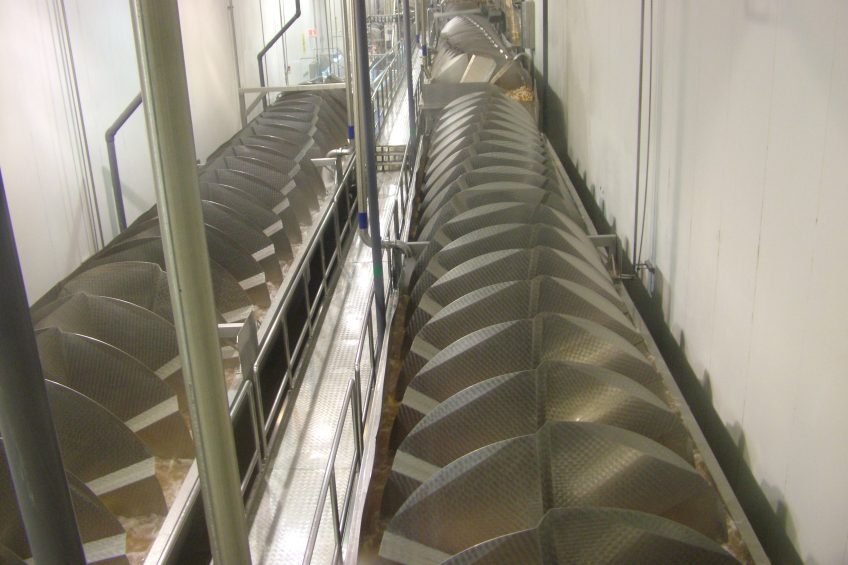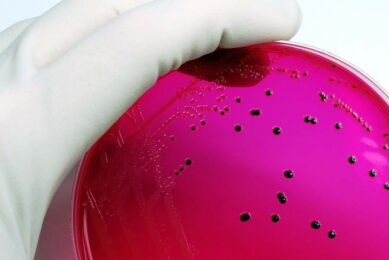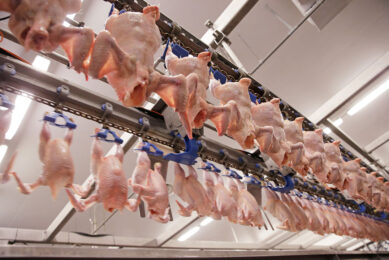Time-temperature alternatives for controlling Salmonella

Food safety is a major issue in the poultry processing industry. Particularly Salmonella contamination is causing great concern. Chilling at 4°C is essential to keep this under control but slows the process, reduces throughput and increases costs. US research unveils that through the use of antimicrobial interventions, it is possible to chill the carcasses between 4 and 7°C and keep Salmonella under control.
By Manpreet Singh and Amit Morey, Department of Poultry Science, Auburn University, AL, USA
Foodborne outbreaks in the USA last year resulted in 9.4 million illnesses including 55,961 hospitalisations and 1,351 deaths. Major pathogens identified as leading causes of these incidences include norovirus, non-typhoidal Salmonella, Toxoplasma, Listeria and Campylobacter.
Non-typhoidal Salmonella has led to an estimated 1.4 million cases annually and a significant number of hospitalisations (35%) and deaths (28%) in the United States (USDA-FSIS, 2011).
Consumption of Salmonella contaminated foods can cause gastroenteritis with symptoms including diarrhoea, abdominal cramps, fever, headache and vomiting; it can cause Reiter’s syndrome and can be fatal to infants, young children, pregnant women, foetuses and immune-compromised patients. Raw poultry and eggs have been identified as a major source of Salmonella.
Contaminated poultry meat represents the greatest public health impact among foods and is responsible for an estimated USD 2.4 billion in annual disease burden. Salmonella is most commonly associated with poultry meat and out of the illnesses attributed to poultry, Salmonella is responsible for 35.1% of illnesses.
Control regulations
To reduce these health risks associated with Salmonella in poultry, the United States Department of Agriculture (USDA) has implemented regulations aimed at preservation and controlling Salmonella in poultry, mandating slaughtered chicken to be cooled at or below 4°C before it leaves the processor. This regulation requires processors to chill chicken carcasses weighing up to 4 lbs. (1.8 kg), 4-8 lbs. (1.8-3.6 kg) and above 8 lbs. (3.6 kg) within four, six and eight hours of slaughter, respectively. Post-process temperature abuse of chicken and subsequent storage increases the risk of Salmonella contamination and hence human infections.
To reduce these health risks associated with Salmonella in poultry, the United States Department of Agriculture (USDA) has implemented regulations aimed at preservation and controlling Salmonella in poultry, mandating slaughtered chicken to be cooled at or below 4°C before it leaves the processor. This regulation requires processors to chill chicken carcasses weighing up to 4 lbs. (1.8 kg), 4-8 lbs. (1.8-3.6 kg) and above 8 lbs. (3.6 kg) within four, six and eight hours of slaughter, respectively. Post-process temperature abuse of chicken and subsequent storage increases the risk of Salmonella contamination and hence human infections.
While models predicting Salmonella growth at abusive temperatures are developed using sterile media or chicken slurry, there are limited studies of Salmonella growth in the presence of background microflora between 4-10°C. Growth patterns can be used for developing models and determining Salmonella growth post-processing and storage. Poultry processors have to implement this regulation but it involves tremendous efforts in terms of time and energy to cool the carcasses which slows the process, reduces throughput and increases costs.
Processors are interested in increasing their production and reducing costs for carcass chilling by reducing residence time of carcasses in the chiller. Taking these hurdles into consideration, the Food Safety and Inspection Service’s (FSIS) Salmonella Initiative Program (SIP) has suggested a waiver for those processors providing an effective alternative to time-temperature regulation which can control Salmonella as per regulations.
Optimum temperature
Poultry processors are controlling Salmonella by applying antimicrobials such as electrolysed oxidising water, chlorine, acetic acid, trisodium phosphate, peracetic acid and sodium hypochlorite as sprays or in the chiller. These have been demonstrated to be significantly effective in reducing the prevalence of Salmonella in poultry. Additionally, published scientific literature indicates that Salmonella cannot grow on chicken at temperatures ranging from 4-8°C.
Poultry processors are controlling Salmonella by applying antimicrobials such as electrolysed oxidising water, chlorine, acetic acid, trisodium phosphate, peracetic acid and sodium hypochlorite as sprays or in the chiller. These have been demonstrated to be significantly effective in reducing the prevalence of Salmonella in poultry. Additionally, published scientific literature indicates that Salmonella cannot grow on chicken at temperatures ranging from 4-8°C.
These facts indicate a possibility for formulating an alternative time-temperature combination wherein the processor using antimicrobial interventions can chill carcasses above 4°C while still being compliant with USDA-FSIS Salmonella standards. Thus considering the waiver, further investigations are needed to provide an optimum chilling temperature above 4°C without changing the growth rate of Salmonella, hence maintaining shelf-life, increasing number of chickens processed, and reducing processing cost. Thus it will be of interest to the processors to study the growth patterns of different serovars of Salmonella at or near chilling temperatures of 4°C without antimicrobials.
Pragmatic approach
Most of the studies conducted on the growth patterns of Salmonella use laboratory media such as brain heart infusion broth or sterile chicken juice. On the contrary, Salmonella is present on chicken along with other bacteria with which it interacts and competes. Thus using non-sterile chicken slurry with background microflora would be a more pragmatic approach towards studying Salmonella growth patterns.
Most of the studies conducted on the growth patterns of Salmonella use laboratory media such as brain heart infusion broth or sterile chicken juice. On the contrary, Salmonella is present on chicken along with other bacteria with which it interacts and competes. Thus using non-sterile chicken slurry with background microflora would be a more pragmatic approach towards studying Salmonella growth patterns.
Research indicated that storage temperatures of 4 and 7°C lowered the level of Salmonella in the chicken slurry. An increase in aerobic plate count with a corresponding suppression of Salmonella growth at 10°C shows an interaction of the pathogen with background microflora. These studies indicated that Salmonella growth can be suppressed between 4 and 7°C in chicken slurry but should be validated on chicken carcasses.
Growth patterns on carcass
Similar growth patterns of Salmonella Typhimurium inoculated on carcass as the in-vitro experiments indicate the possibility of using either of the two medium for such kind of studies (Figure 1). The growth of pathogens was significantly higher at 10°C while there was no growth at 4°C. These observations confirm that Salmonella cannot grow at 4°C either in laboratory medium, chicken slurry or whole carcasses.
Similar growth patterns of Salmonella Typhimurium inoculated on carcass as the in-vitro experiments indicate the possibility of using either of the two medium for such kind of studies (Figure 1). The growth of pathogens was significantly higher at 10°C while there was no growth at 4°C. These observations confirm that Salmonella cannot grow at 4°C either in laboratory medium, chicken slurry or whole carcasses.
Although the USDA legislation indicates that poultry should be chilled to 4°C or below, research suggests that Salmonella Typhimurium and Heidelberg do not grow at 4-7°C. Thus if processors are using antimicrobial interventions, they should be able to chill the carcasses between 4 and 7°C and still be able to keep Salmonella under control. It should be noted that further in-plant validation of these parameters is important before adapting a particular time-temperature alternative. Such efforts can reduce the chilling time thus increase throughput and profit at the same time as driving down the energy costs.












